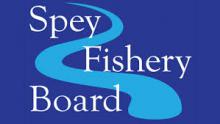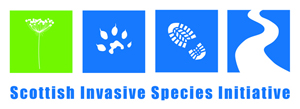
Spey Fisheries Board
The Spey Fishery Board is responsible for the Spey Fishery District, which includes 52 rod fisheries within the mainstem of the Spey and its tributaries. The Spey Foundation undertakes a wide range of fishery activities on behalf of the board, including research, surveys & monitoring, habitat management, and Education work.
The Spey Foundation has undertaken work with key invasive plant species including Water crowfoot, Himalayan balsam, Japanese knotweed and giant hogweed. The Board is now working with the Scottish Invasive Species Initiative to continue strategic giant hogweed, Japanese knotweed, Himalayan knotweed, American skunk cabbage and Himalayan balsam removal work throughout the catchment. The project enables us to deploy contractors on an annual basis in the worst affected areas to initially reduce the abundance of our target plant species. Alongside this we are working with a wide range of volunteers, land managers, organisations and stakeholders to embed control treatment into local communities and work towards sustainable invasive non-native species management in areas that have become locally manageable.
Although no longer one of the Scottish Invasive Species Initiative’s target species, the project officer also coordinates the river Fiddich white butterbur control project, which is set to start in 2024.
Together we carry out control of the target species, monitor abundance and strategically work our way into new downstream areas – delivering a significant volume of treatment work and making positive progress that would not be possible without the support of everyone involved. Our giant hogweed control work starts on the upper extent of the Mulben burn (the upstream source) with the current lower limit some distance below the Fochabers bridge. Japanese knotweed control is carried out annually on the River Fiddich and starts again at Rothes along the Spey mainstem towards areas below the Fochabers bridge. Some work for both giant hogweed and Japanese knotweed is now also being undertaken on the Burn of Tynet.
The Spey Fisheries Board was also an active partner in several previous mink control projects, and this work is continuing now, with active mink monitoring work and trapping being undertaken catchment-wide with the help of volunteers as part of the Scottish Invasive Species Initiative.
Contact
Karen Muller (SISI Project Officer): [email protected] 07946 353117
or
Atticus Albright (Biologist): [email protected] 07484 893330
